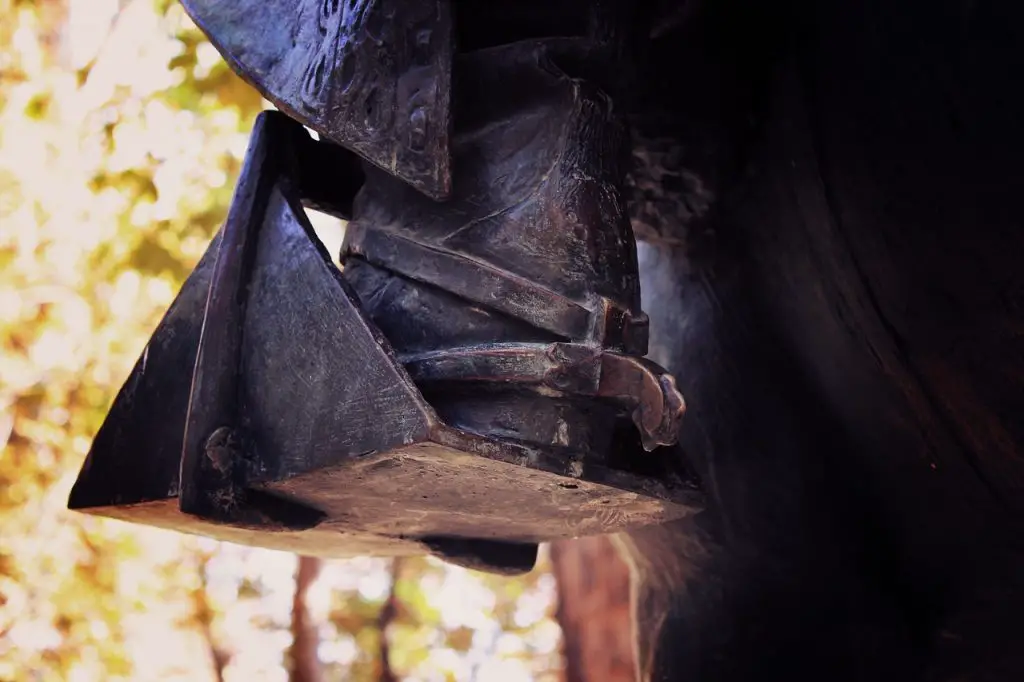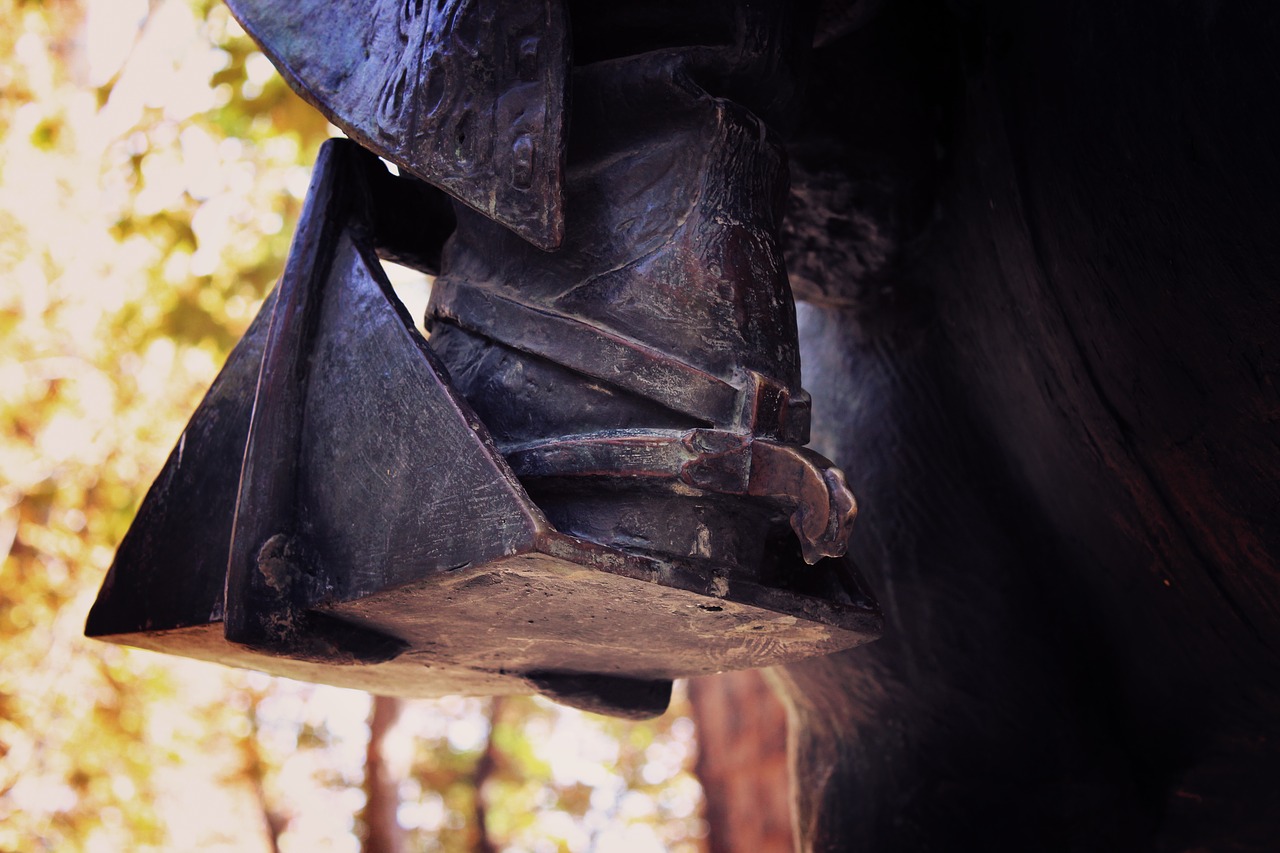Last Updated on February 24, 2022 by Allison Price
Many people associate spurs with cowboys in the West, but did they know that they were an ancient tool for equestrian use? For thousands of years, riders have been using spur-like devices.
What are spurs and why are they important? Continue reading to find out more about this small but powerful piece of horse equipment.
Table of Contents
What are Spurs?
Spurs, small pieces of riding equipment, are attached to the back of a rider’s boots heels. They allow for direct communication between a rider and his horse. There are many sizes and shapes. They are primarily made of metal and attach to the rider’s boots with leather or synthetic straps.

Spurs can be simple and elegant, or intricately decorated with elaborate designs.
Modern spurs consist of three parts: the heel band (also called a yoke, shank or neck), the neck/shank and the rowels. The band is attached to the back of the horse’s boot by the neck.
The most basic English spur designs only have one blunt tip. Western riders will use something more elaborate with spinning rowels.
What are Spurs Used for?
Spurs communicate subtle messages to horses and can be used with other aids to encourage them to move forward laterally or with urgency.
Spurs have a precise contact point with horses’ sides than a heel or leg assist. This can help the horse learn to respond to the gentle pressure of a spur.
Spurs can be used in many riding activities, including English and Western disciplines. However, they are strictly controlled in competition by some equestrian groups.
The uniform for military cavalry units includes spurs. They are often part of ceremonial wear. (source)
The Spur’s History
The Anglo-Saxon word for “spur” is “spura,” which loosely translates to “to kick or urge upon”. Although the earliest examples were made of bone and wood, later versions included various metals.
They were used by the Celts in the 5 th century and the Romans throughout the history of the Roman Empire. They were also found in the Ancient Arab World.
Medieval spurs were a sign of rank during the age chivalry. Squires wore silver and knights wore gilded ones, while pages were made from basic tin.
As a knight rises up the ranks, he may “earn his spurs”, which is an expression we still use today.
1302: An untrained militia of Flemish craftmen defeated the professional French cavalry during the ” Battle of the Golden Spurs.”
The French calvary was defeated and the victors took their spurs and placed them in the church to celebrate their historic victory. (source)
Spurs can be used to work cattle or encourage horses to jump high.
Common Types Of Spurs
Although spurs are usually classified by their shape and color, there are many spur designs that combine traditional components. In Western events, spurs can also be classified by their purpose.
These are the most popular types of spurs.
Round End
The basic spurs are rounded at the tip and have a blunted, round shape. These basic spurs are great for anyone who is just starting to use spurs. They are easy to use, gentle on horses’ sides, and simple. Sometimes referred to as a “dummy spur”, a round end spur without shin is also known as an “embedded” spur.
Knob End
These spurs can be used for both Western and English riding. Although the tip of the spur is round, it has a slightly irregular shape.
Prince of Wales
This style is very popular in English riding. It is flat at the end, but it is blunt. These are often found in equestrian competitions and schooling.
Swan Neck
These spurs have a curving neck. This is a popular choice in dressage. The spur is shorter if the neck is longer. Competition may limit the length of the spur.
Waterford
Waterford spurs are large with blunt balls at the ends. These are used in English riding and may have a different length neck.
Barrel Racing Spur
These unusual spurs do not have rowels. The heel band’s one side has ridges, or “teeth”. They are ideal for barrel racing, as riders don’t need to rotate their heels inwards.
Rowelled Spur
These spinning spurs are used mainly in Western riding. They have pronged wheels which move independently of the neck. Some have multiple prongs while others have just a few. The prongs should not be sharp and the rowels allow the spur to move along the horse’s side while he moves. This can reduce the surface area of prongs and, therefore, the severity.
English Rowelled Spurs
Some rowelled spurs do not have any prongs, especially in English disciplines such as jumping and dressage.
- Disco This spur is used in dressage and has a rowel made of a rolling disc, instead of prongs.
- Roller A mild spur with a small, plastic roller at the end.
- Rollerball These spurs are made from rubber or metal and have small rolling balls at the ends that move.
Western Rowelled Spurs
A spur may have a particular shape depending on the work that a rider does with their horse.
Western spurs have often longer shanks than others and larger rowels. This is because the Western rider can be quite far from his horse’s side.
A long shank allows a long-legged rider to have more space to reach his horse, and gives him a cue.
These are the most popular Western rowelled spurs as described by Bob Avila, AQHA Champion ( source).
- Cloverleaf The prongs of the Cloverleaf are shaped like a cloverleaf and the shank is quite short. These are great for horses with sensitive skin or less experience riders.
- Roper-Style. These spurs are made with rowels that have ten blunt points and a shorter shank. A spur with a shorter shank helps prevent a rider from accidentally jabbing their horse when he stands up. This is a common maneuver used by ropers.
- Reiner Style – A reiner-style spur is a great choice for reining horses who may need more subtle communication from their long-legged riders. The shank is also longer and more curved than the ten-pointed rowels. This makes it easier for riders with long legs to reach the horse’s side.
- Nine Point Star These spurs are designed for more experienced users. The points are sharper and longer than a ten-pointed one. These spurs are not recommended for beginners who have poor control of their legs.
Are Spurs Cruel?
Spurs can be cruel when used incorrectly. In general, spurs should be handled by skilled handlers who are familiar with how to use them.
For beginners, they should be avoided.
Horses can be injured and suffer pain from excessive or inappropriate spur use. Incorrect spur use can cause horses to ignore leg aids, which can lead to a problem in training.
If your spurs cause psychological or physical damage to your horse (e.g., puncture wounds or lesions) then you should stop using them and consult a professional trainer.
Spurs in Competitions
Every equestrian show has its own rules regarding spurs, including their type and size. These are examples of the types of spurs allowed and not.
| Event/Organisation | Spurs Allowed | Spurs Not Allowed |
| USEF Dressage | Metal, English Style, Blunt “Dummy” style, or smooth rowels, no more than 3.5cm | Sharp rowels, toothed Spurs, and spurs with necks exceedingly long (3.5cm). |
| USEF Event | Must be made from smooth metal. Maximum 4 cm shank | Rowel spurs with pointed points and curved spurs. |
| AQHA Western Events | Most designs | English toothed spurs have no smooth sides. |
How to choose the right spur for you
There are so many choices that it can be hard to find the right spurs for you. Western riders are more likely to have more choice, especially in terms of appearance and decorative elements that a nice set of spurs can offer.
English riders need to make sure their spurs are allowed to compete and that they are not too harsh on their horses.
Consider the following when choosing a set of spurs:
- Temperament. Are you able to communicate with your horse? Are you able to listen? You might find that he is able to understand what you are asking. However, you would like to improve his movement. You can use mild dummy spurs to check if your horse has ever been ridden with spurs. Spend some time training him.
- Ability. Are you able to control your legs well and want to learn more? You might be kicking your horse accidentally or holding onto his belly to balance. Work on your riding skills and add spurs.
- Discipline. Which type of spurs have been used traditionally in your chosen discipline? They are allowed to compete?
- Fit. Your horse and your body should be comfortable with the spurs you choose. A longer shank is better for riders with longer legs than for those who are in close contact with their horses’ sides.
- Talk to a professional. If in doubt, ask a professional for help to match you and your horse.
Spurs are a useful tool for advanced riders, but they can also be dangerous. You should always pay attention to the behavior of your horse and never misuse spurs.



